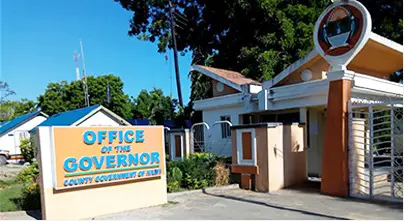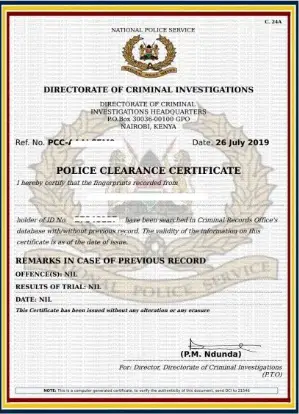You’re cruising down the highway, the wind in your hair, and the radio playing your favorite tunes. It’s a beautiful day, and you’re enjoying the freedom of the open road.
But have you ever wondered who’s responsible for ensuring that our roads are safe and our transportation systems efficient? Enter the National Transport and Safety Authority (NTSA).
In this article, we’ll dive into the world of NTSA, exploring their mandate and how they impact our daily lives. From advising on road safety matters to implementing policies and regulating the transport sector, NTSA plays a vital role in keeping our roads safe and our journeys smooth.
Advising and Recommending
NTSA’s Role in Advising
You see, NTSA wears many hats, one of which is that of an advisor. They are like the trusted friend who offers you valuable advice when you’re planning a road trip.
NTSA advises and makes recommendations on matters related to road transport and safety. This isn’t just about handing out brochures on safe driving; it’s about creating strategies and solutions to keep us all safe on the road.
Here’s a snapshot of some of the key areas where NTSA provides guidance:
| Matters Requiring Advice | NTSA’s Role |
|---|---|
| Road Safety Awareness Campaigns | Develops and executes awareness campaigns to educate the public about safe driving practices. |
| Vehicle Inspection Standards | Sets and updates vehicle inspection standards to ensure roadworthy vehicles. |
| Traffic Management and Control | Recommends traffic management strategies and technologies to ease congestion and enhance safety. |
The Impact of Expert Advice
Let me share a personal anecdote to illustrate the importance of expert advice. A few years back, I was planning a cross-country road trip with friends. Excitement was in the air, but so were doubts about our vehicle’s condition. We decided to consult NTSA’s guidelines on vehicle safety, and it was eye-opening.
Following their advice, we had our car thoroughly inspected, which led to the discovery of some hidden issues. Thanks to NTSA’s recommendations, we resolved these problems, making our journey safer and more enjoyable.
NTSA’s expertise extends beyond individual cases; they influence national road safety policies and programs. The result? Safer roads for everyone.
Policy Implementation
NTSA’s Role in Policy Implementation
Advising is one thing, but putting recommendations into practice is where the rubber meets the road. NTSA plays a crucial role in implementing policies related to road transport and safety. Think of them as the architects of road safety, turning blueprints into structures that protect us all.
Here are a few policy areas where NTSA’s implementation efforts shine:
| Key Policies | NTSA’s Implementation Role |
|---|---|
| Speed Limit Enforcement | Ensures that speed limits are enforced through measures like speed cameras and regular monitoring. |
| Drunk Driving Prevention | Develops and enforces policies to reduce drunk driving incidents, such as sobriety checkpoints and awareness campaigns. |
| Vehicle Emission Standards | Implements emission standards to reduce air pollution from vehicles. |
Why Effective Policy Implementation Matters
Imagine you’re on a highway where everyone obeys speed limits, and there’s strict enforcement against drunk driving. Sounds like a dream, right? Well, thanks to NTSA’s policy implementation efforts, this dream becomes a reality.
I remember a time when I drove through a region where speed limits were strictly enforced. At first, I felt slightly inconvenienced, but then I realized how much safer it made the road. You see, effective policy implementation isn’t just about following rules; it’s about safeguarding lives.
Sector Planning and Management
NTSA’s Role in Sector Planning and Management
Now, let’s talk about the bigger picture. NTSA isn’t just concerned with individual drivers; they’re also tasked with planning, managing, and regulating the road transport sector. This means they oversee the entire ecosystem of road transportation, from vehicles and drivers to infrastructure and regulations.
Here’s a glimpse of NTSA’s responsibilities in this area:
| Key Aspects of Sector Management | NTSA’s Role |
|---|---|
| Licensing and Registration | Issues and manages driver and vehicle licenses and registrations. |
| Road Infrastructure Maintenance | Ensures that road infrastructure is properly maintained for safety and efficiency. |
| Public Transport Regulation | Regulates public transport services to ensure safety and quality for passengers. |
The Challenges of Regulating a Complex Sector
Regulating an entire sector is no small feat. It’s like trying to navigate through heavy traffic during rush hour. NTSA faces numerous challenges in maintaining order and safety on our roads, including:
- Diverse Stakeholders: Coordinating efforts among various stakeholders, including government agencies, private transport companies, and citizens, can be complex.
- Technological Advancements: Keeping up with rapidly evolving transportation technologies, such as electric vehicles and autonomous cars, requires constant adaptation.
- Funding Constraints: Ensuring adequate resources for infrastructure maintenance and safety programs can be challenging in budget-constrained environments.
Despite these challenges, NTSA plays a critical role in ensuring the smooth operation of our road transport sector.
The Legal Framework: NTSA’s Rulebook
Introduction to Act No. 33, 2012
To understand how NTSA operates, we need to delve into the legal framework that governs their actions. The National Transport and Safety Authority Act No. 33, 2012 is the rulebook that guides NTSA’s operations. This Act defines their mandate and sets the boundaries within which they operate.
NTSA’s Operation Within the Act
The Act provides NTSA with the legal authority to execute their mandate. This includes the power to:
- Impose penalties: NTSA can penalize individuals or entities that violate road safety regulations, such as speeding or overloading.
- Issue licenses: NTSA grants licenses to qualified drivers and registered vehicles, ensuring compliance with safety standards.
- Regulate public transport: The Act empowers NTSA to regulate public transport services, including setting fares and safety standards.
Amendments and Updates
Like any good rulebook, the Act is not set in stone. It can be updated and amended to address changing circumstances and emerging challenges. NTSA often works with lawmakers to adapt the Act to the evolving transportation landscape.
Public Transport Services
NTSA’s Involvement in Public Transport Regulation
For many of us, public transport is a daily necessity. Whether it’s taking a bus to work or hopping on a train for a weekend getaway, we rely on public transportation. NTSA understands this, which is why they play a significant role in regulating public transport services.
Here’s how NTSA contributes to your daily commute:
| Public Transport Regulation | NTSA’s Role |
|---|---|
| Vehicle Safety Standards | Sets and enforces safety standards for public transport vehicles to protect passengers. |
| Fare Regulation | Ensures that public transport fares are reasonable and transparent. |
| Passenger Safety Awareness | Conducts campaigns to educate passengers about safety measures during their commute. |
The Impact on Your Commute
Picture your daily commute without proper regulation. Overcrowded buses, reckless drivers, and exorbitant fares – it would be chaos. NTSA’s involvement in public transport regulation ensures that your commute is safe, affordable, and hassle-free.
I vividly remember a time when I relied on public transport for my daily commute. It wasn’t always smooth sailing, but knowing that there were regulations in place gave me a sense of security. I knew that the vehicles I boarded met safety standards, and fare disputes could be resolved through proper channels.
Conclusion
In this journey through NTSA’s mandate, we’ve seen how they serve as your trusted road safety advisor, policy implementer, sector manager, and public transport guardian. Their efforts might often go unnoticed, but they are the unsung heroes ensuring our roads are safe and our transportation systems efficient.
As we conclude, it’s crucial to emphasize that NTSA’s role is not just about enforcing rules; it’s about protecting lives. We all have a stake in road safety, and NTSA is there to guide us on this journey. So, the next time you see a road safety campaign or a speed camera, remember that it’s NTSA working behind the scenes to keep you safe.
But their work doesn’t stop here. NTSA’s mandate continues to evolve as our transportation landscape changes. As we move towards a future of electric vehicles, autonomous cars, and smart infrastructure, NTSA will be at the forefront, ensuring that we embrace these advancements safely and responsibly.
So, the next time you hit the road, remember the unsung heroes of road safety – NTSA. They’re your ally, your advisor, and your guardian on the highway of life. Together, we can make our roads safer, our journeys smoother, and our future brighter.



